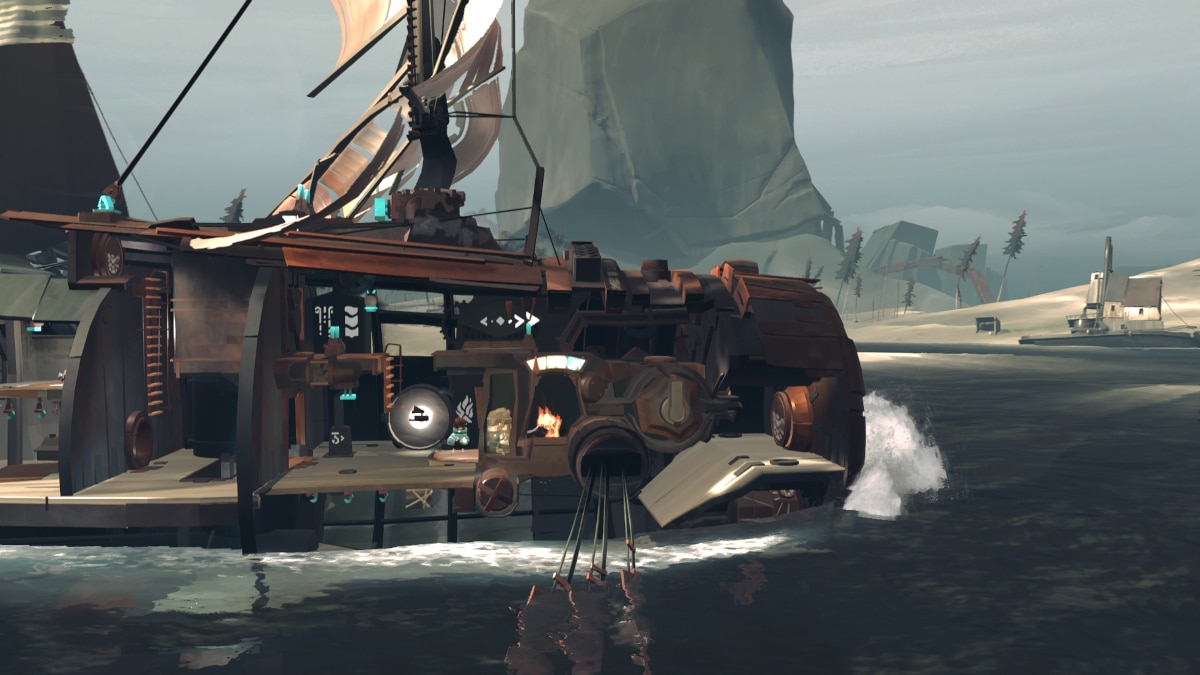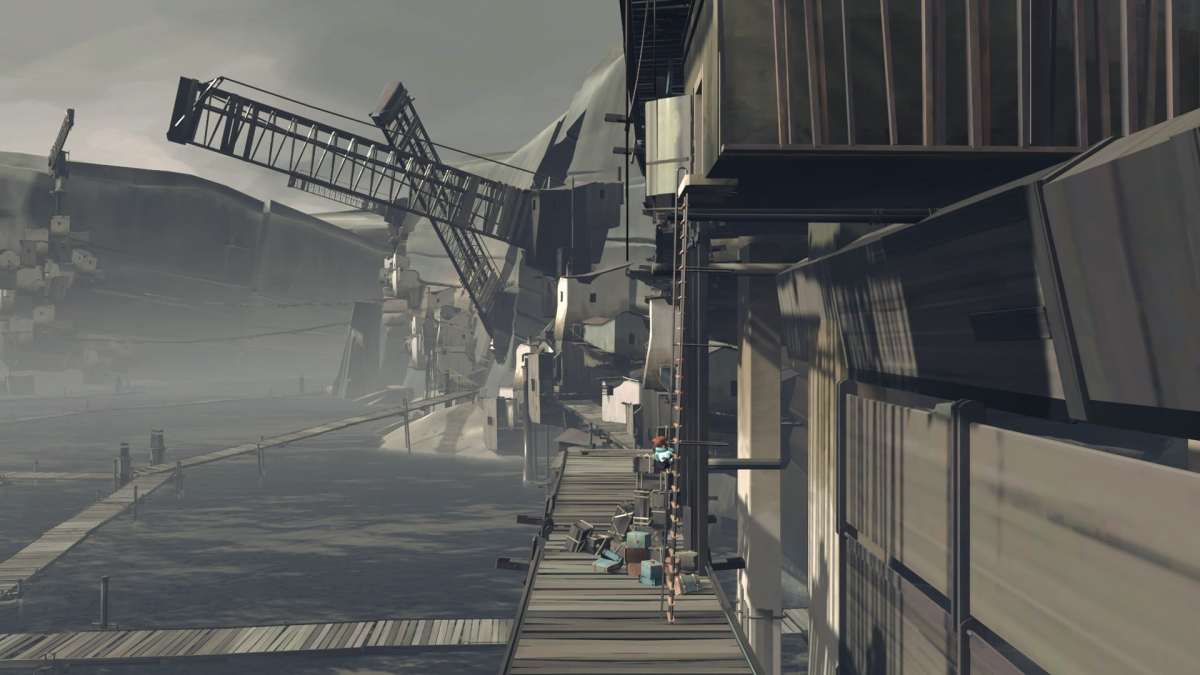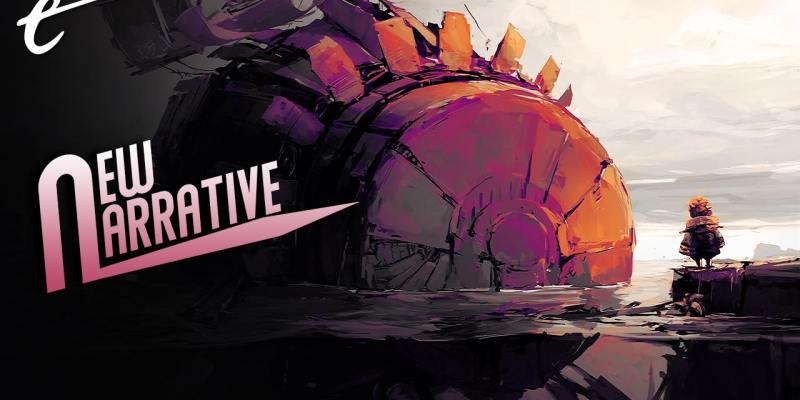The best climate fiction doesn’t preach a message; it simply shows what it might be like to live in a radically different environment. From the malaise induced by the heat and humidity in J. G. Ballard’s The Drowned World, to the corporate scramble for alternative sources of calories in Paolo Bacigalupi’s The Windup Girl, the perception of these stories as dystopian is in part the work of the audience. Ballard doesn’t tell you that his imagined future is a bleak one — indeed, The Drowned World’s protagonist grows ever more eager to embrace it — but he hardly needs to. We acquaint ourselves with these settings and we decide we do not want to live like that. We can draw our own parallels with the real world and ask how much we want to risk that kind of future for ourselves.
So it is with FAR: Changing Tides. You start the game as a boy alone in a half-flooded city, picking your way through ruined buildings towards a sailboat that you steer into the wide unknown. There is no dialogue, text, or cutscenes — only the evocative art and the stirring soundtrack. The game leaves you free to make your own mind up about who the boy is or why he is sailing out. It might be to find family or a way to fix the city, but his singular focus on moving forward suggests something more grounded — the boy is simply looking for something different, hoping he can outrun the environmental disaster he is trapped in.
It makes the scenery the boy travels through all the more poignant. Uprooted forests, melting ice caps, and dead machinery linger in the background. Houseboats and other abandoned vehicles are strewn across his way, indicating a mass exodus long ago. No matter how far he goes, there is no escape from the detritus of civilization. Worse still, there is no escaping the feeling that the journey has been attempted by many before him, to no avail.

The boy upgrades his vessel as he journeys: a steam engine for when the winds are too quiet to sail, an overdrive module to power through the hardiest obstacles, and a submersion system to turn the ship into a submarine. These are managed through an array of analogue switches and levers. A button ignites the engine, a set of bellows must be jumped up and down on to keep it going, a pump toggles between a vacuum and a hose to dispense or remove water, a switch raises the mast, and a line is drawn to hook the sail. The boy needs to dash between them, climbing ladders and rigging, occasionally wielding a blowtorch, to keep the overall system balanced and in good working order.
It feels more fiddly than in Changing Tides’ predecessor, FAR: Lone Sails, and as a result it loses some of that game’s elegance and sense of pace. There were multiple times when I smashed my mast against an obstacle, for example, either because I did not read the game’s 2.5D design well enough or because the obstacle arrived before I could respond to it. But the payoff is that FAR: Changing Tides is more varied than Lonely Sails, with a greater breadth of navigational challenges and puzzles and a broader range of environments that tell their own stories.
Early in the game, a massive wave rips the stern from the boy’s ship. Later, there is a suggestion that the wave was due to a breach of the city’s flood wall. Later still, as the boy raises another city from the oceanic depths, we might infer that the entire civilization has adapted itself to rising sea levels. It isn’t the hopeless post-apocalypse of something like The Last of Us, nor the cheerful nihilism of Fallout’s retrofuture, but a kind of Ballardian melancholy — the boy’s energetic obsession with his journey foregrounded against a listless world.

There are murals to be found throughout FAR: Changing Tides that suggest the crisis may be of human making, perhaps a bomb, a nuclear accident, or over-exploitation of resources. Certainly, the ship’s reliance on steam sits in uncomfortable tension with the slow death of the boy’s world. This tension is underscored, perhaps, by the fact that the only fuel available to burn is relics of the old world: fuel canisters, luggage, boxes, and other bits of rubbish. It’s as if the boy is burning his history, because everything else has already been exhausted.
On the other hand, the murals could just as easily be interpreted as a story of the struggle to adapt to changes in the climate. Some of them look like maps of the flood wall, for example, while others a possible council meeting to discuss solutions. FAR: Changing Tides works because it doesn’t force an interpretation. For that reason, it is also particularly effective at putting the focus on the consequences of the disaster. The cause and therefore the blame do not matter so much when the world is already broken.
And yet not everything is quite so bleak. In addition to the game’s bittersweet ending, which I won’t spoil here, there are signs of healing. Elk or deer can be seen in the distance, shoals of small fish and even groups of manta rays swim under the waters, and new plants flourish in some of the game’s dryer areas. Even the boy — should the player choose to let him — can bring a flower from the flooded city to the end of his journey. FAR: Changing Tides doesn’t preach at the player, but the silent effort of traversing its dying world speaks volumes.
